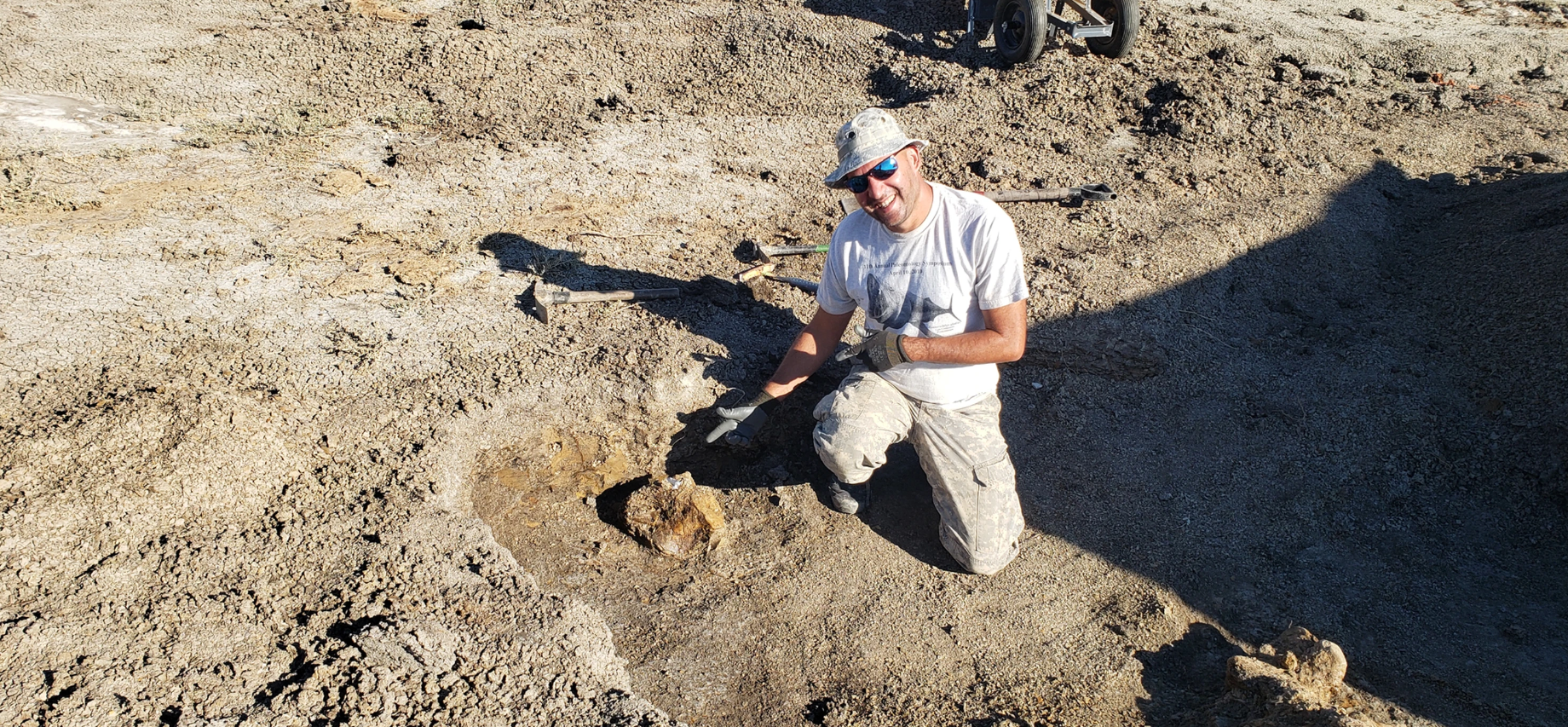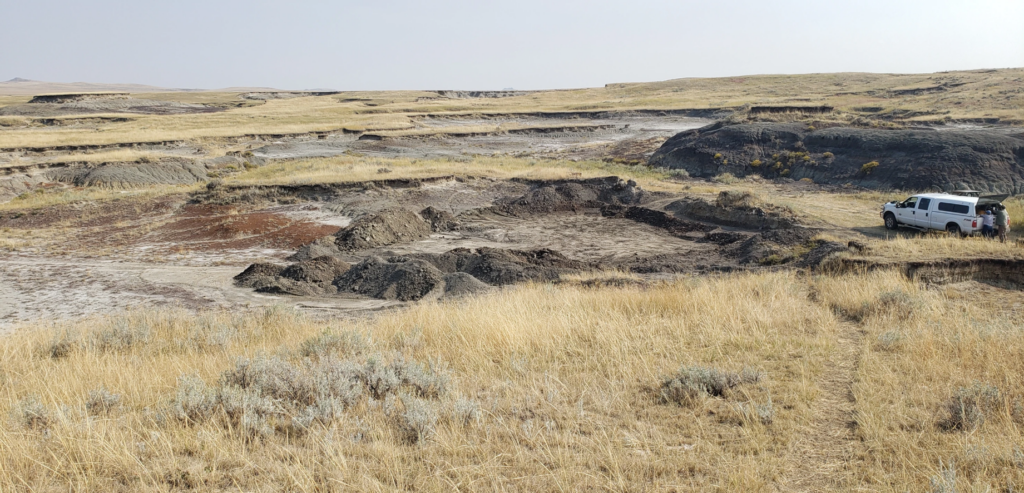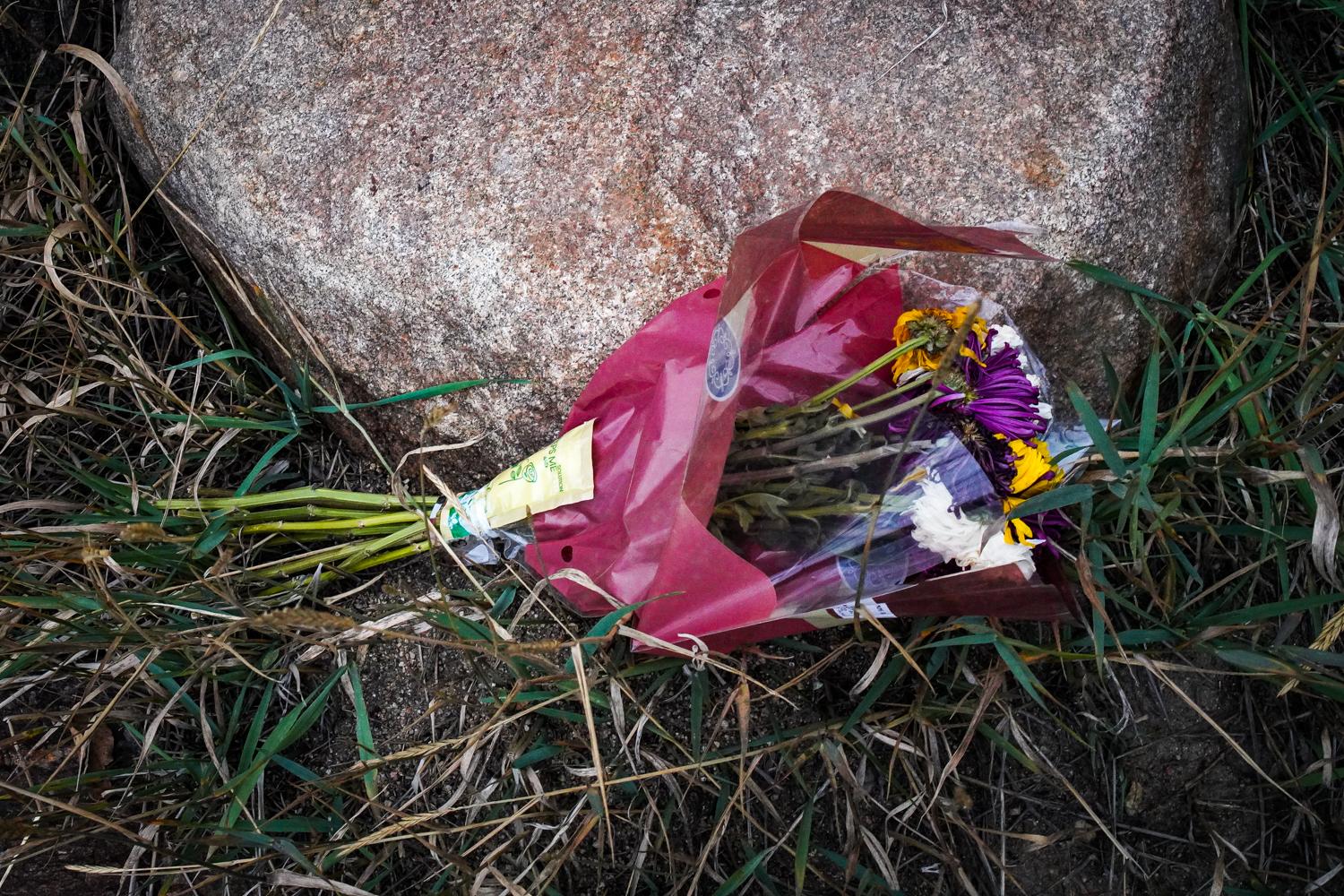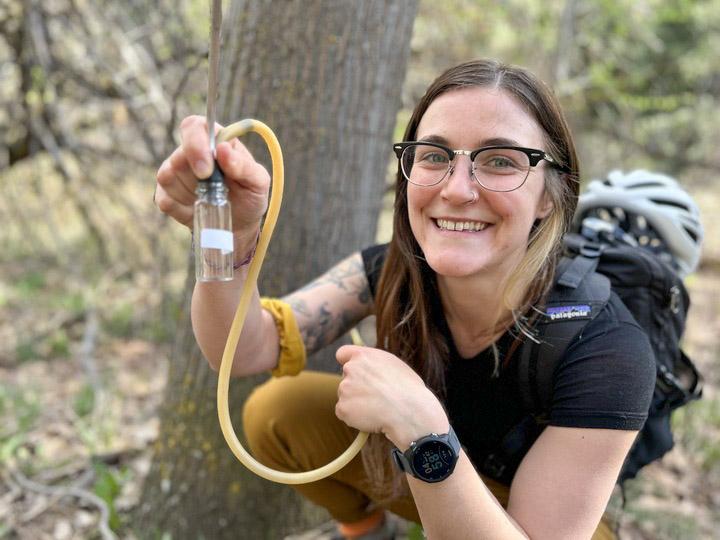
It took 25 years, but fossil hunter Anthony Maltese finally found what he was looking for: an elusive Tyrannosaurus Rex fossil.
Maltese, working with his Triebold Paleontology, Inc. team that is based out of Woodland Park, was in the fossil fields of the Badlands region of South Dakota in the final hours of the last day of his expedition when the discovery was made this summer.
“Every year, you know, rainstorms come through and it exposes a little more and you might find a new specimen and I just kind of got lucky at being at the right place at the right time,” said Maltese, who found his last dinosaur seven years ago. “Seeing some tailbones of a T-Rex eroding out of the ground, They were just right on the surface there.”
About 55 individual bones were found during the dig. It was determined that the well-preserved bones were parts of the T. rex’s tail, pelvis, ribs, shoulder girdle, and skull. That accounts for about 15 percent of the fossil.
Maltese guesses the animal lived 66 million years ago during the Cretaceous Period and was 15 or 16 years old when it died.

“We saw pathologies on there which is evidence of disease or injury that happened when the animal was still alive,” said Maltese. “And so, this thing did not have a nice docile life or anything when it was still running around.”
Teeth marks were also found which means the T. rex was possibly a victim of cannibalism or being scavenged.
The animal is known by its serial number in the database. The number is based on the year and order the fossil was found. But, this particular animal was named Valerie after Maltese’s wife.
This one is 22-014 and that is not very memorable,” Maltese said. “We give these animals names a lot of times for people that we know like family members and nicknames so you can honor the person.”
The bones are currently on display at the Rocky Mountain Resource Center, where Triebold Paleontology, Inc. is headquartered, in Woodland Park.
Correction: An earlier version of this article mislabeled the geologic period that it is estimated the fossils came from. It is the Cretaceous Period.









